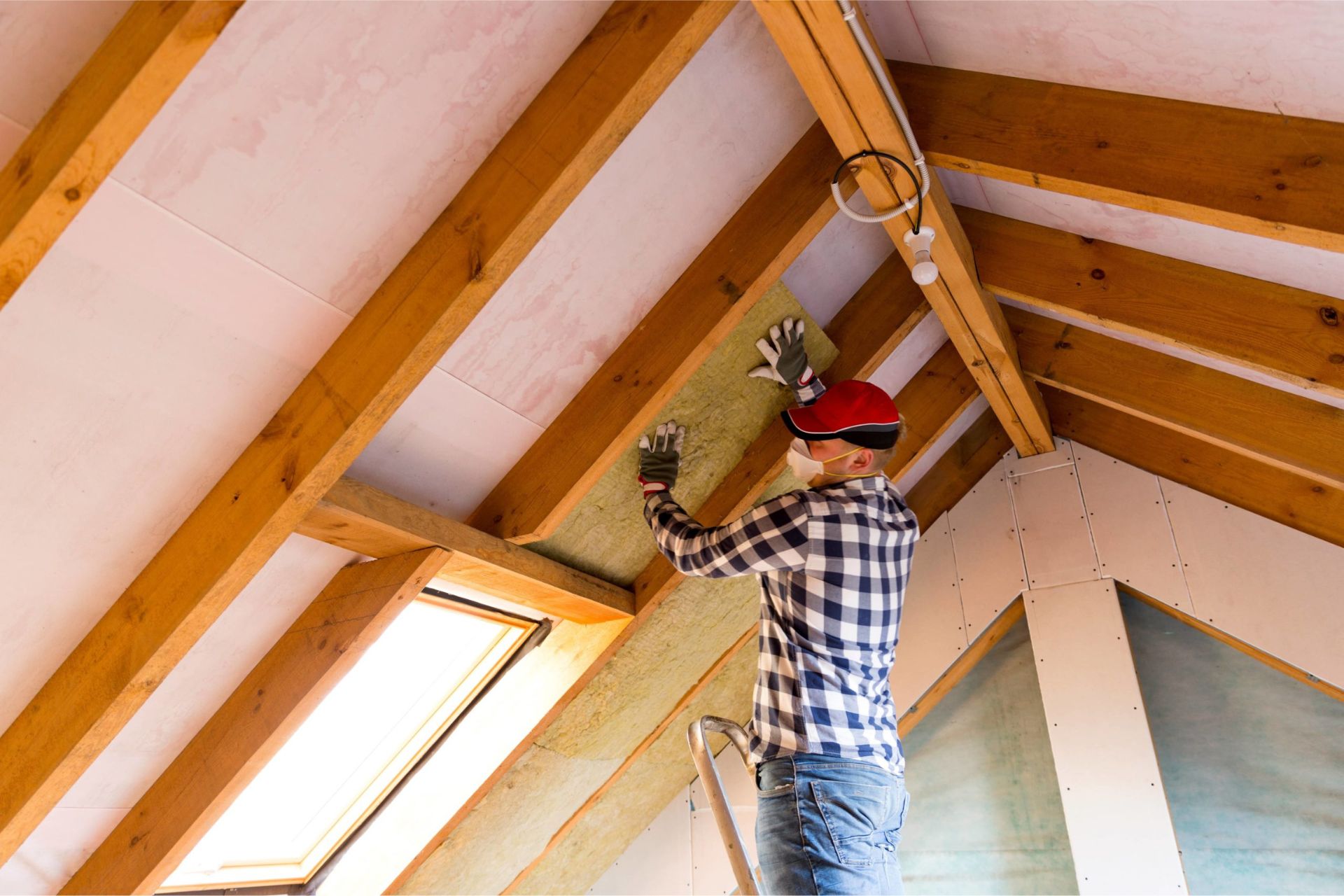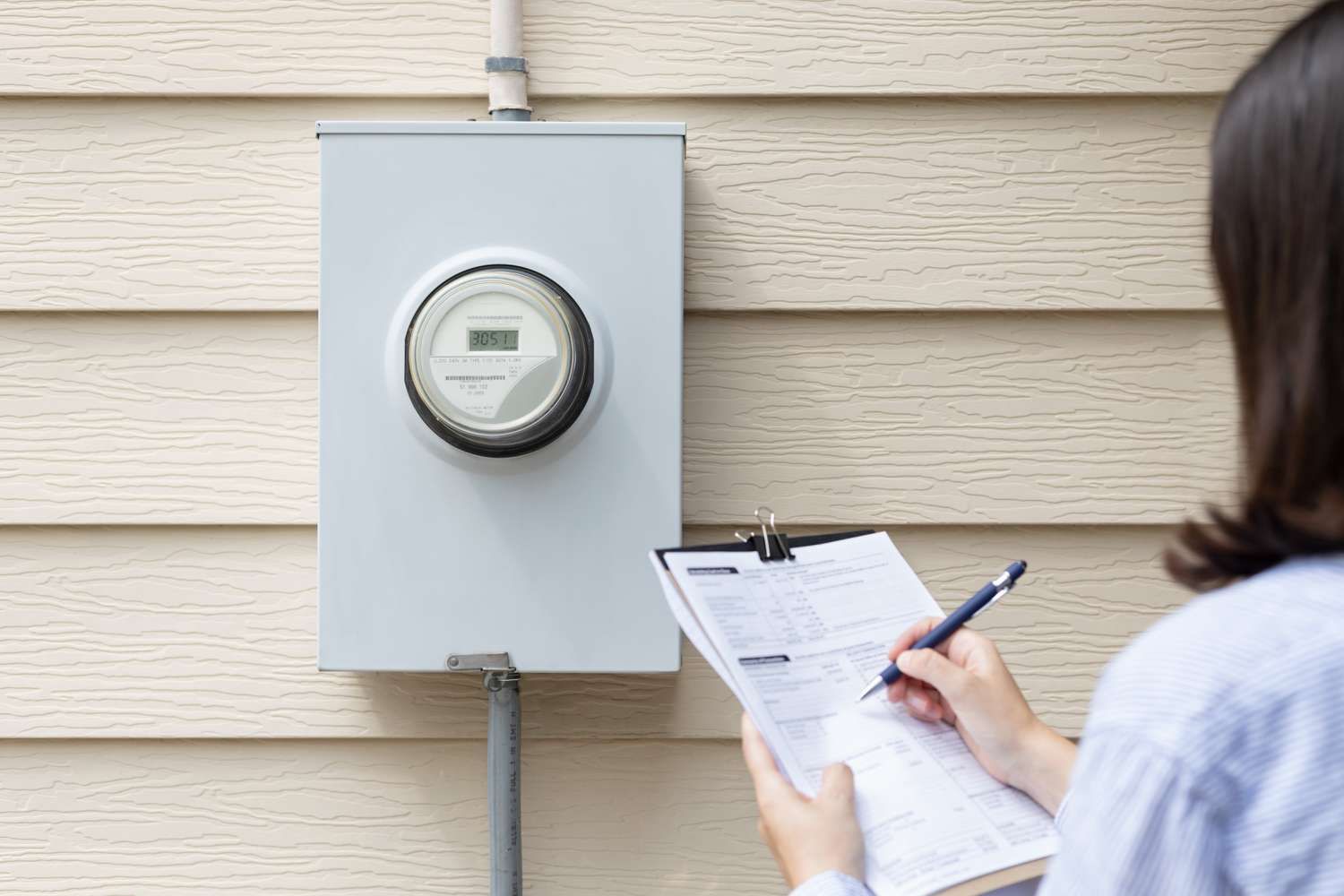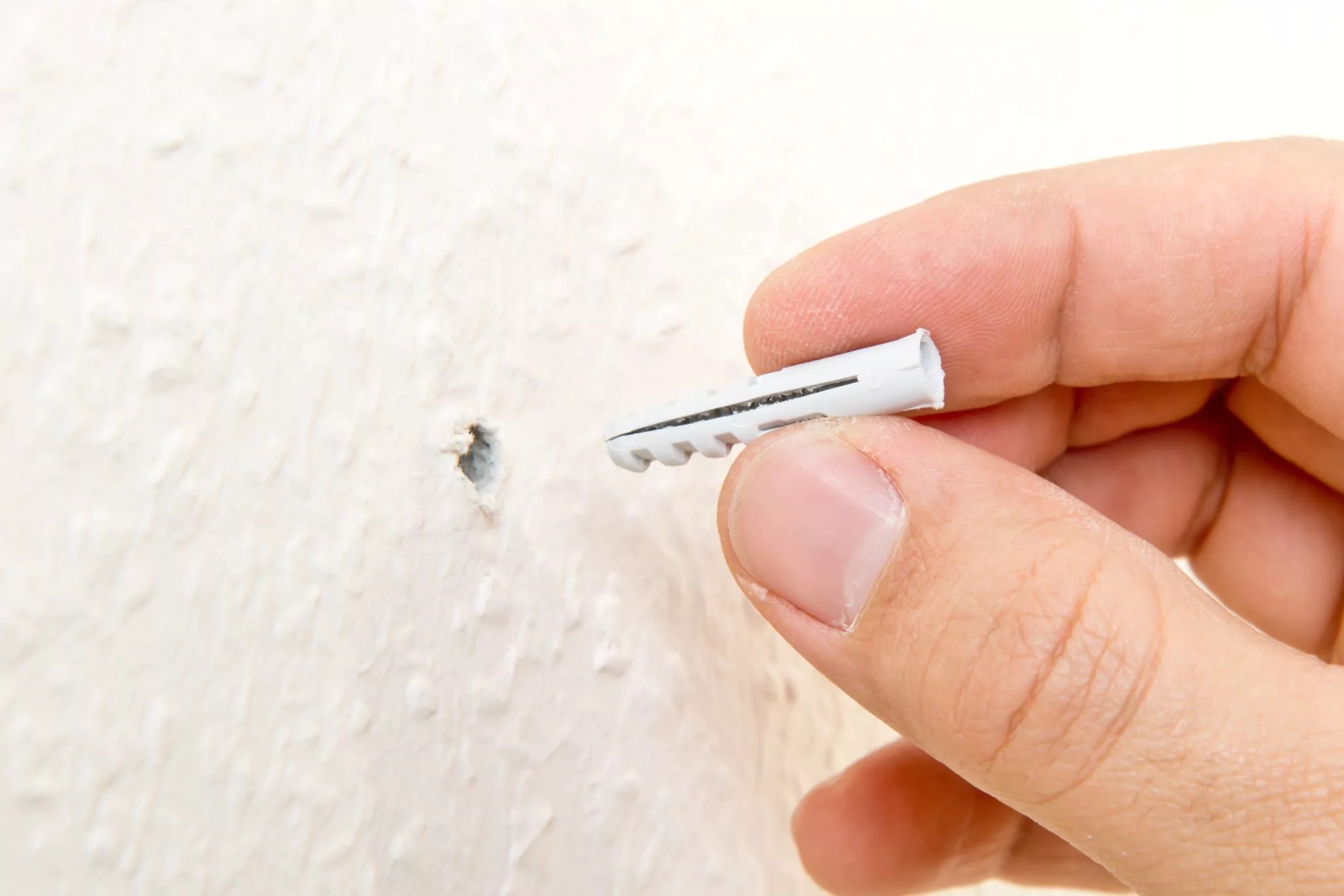Home>Home Maintenance>How To Refinance Your Home And Use Equity For Bills Or Home Repair


Home Maintenance
How To Refinance Your Home And Use Equity For Bills Or Home Repair
Modified: March 6, 2024
Learn how to refinance your home and leverage its equity to cover bills or home repairs with our helpful guide on home maintenance.
(Many of the links in this article redirect to a specific reviewed product. Your purchase of these products through affiliate links helps to generate commission for Storables.com, at no extra cost. Learn more)
Introduction
Welcome to the world of home refinancing! Whether you’re looking to consolidate debt, fund home repairs, or simply lower your monthly mortgage payments, refinancing your home can be a smart financial move. One of the benefits of refinancing is the ability to tap into your home’s equity, which can provide you with the funds you need for various purposes.
In this article, we will explore the process of refinancing your home and using your equity to tackle bills or invest in home repairs. Understanding how home equity works and the steps involved in refinancing will empower you to make informed decisions about your financial future.
So, let’s dive in and discover how you can make the most of your home’s equity through a strategic refinancing plan!
Key Takeaways:
- Refinancing your home allows you to use your home’s equity for bills or repairs. It’s important to understand the process, weigh the pros and cons, and make informed decisions to achieve your financial goals.
- By tapping into your home’s equity through a strategic refinancing plan, you can access funds for various purposes, improve your financial stability, and increase the value of your property. However, it’s crucial to budget wisely and consider the long-term implications of your decisions.
Understanding Home Equity
Before we delve into the process of refinancing your home, it’s crucial to have a clear understanding of what home equity is. Home equity refers to the portion of your home’s value that you actually own. It is the difference between the current market value of your home and the outstanding balance on your mortgage.
For example, if your home is worth $300,000 and you still owe $200,000 on your mortgage, your home equity would be $100,000. As you continue to make mortgage payments and your home’s value appreciates, your equity will increase over time.
Home equity can be a valuable asset, as it allows homeowners to access funds for various purposes through refinancing. By taking advantage of your home’s equity, you can secure a loan with favorable interest rates and terms that can help you achieve your financial goals.
It’s important to note that lenders will typically allow you to borrow up to a certain percentage of your home’s value. This percentage is known as the loan-to-value (LTV) ratio. Most lenders require that your LTV ratio be below 80% in order to qualify for refinancing. However, this may vary depending on the lender and your individual financial circumstances.
Now that we have a solid understanding of home equity, let’s move on to the steps involved in refinancing your home and utilizing this valuable asset.
Steps to Refinancing Your Home
Refinancing your home involves a series of steps that you need to navigate in order to successfully secure a new mortgage loan. Let’s explore the process to help you understand what to expect:
- Evaluate your financial situation: Before diving into refinancing, take a close look at your current financial situation. Review your credit score, income, and debts to determine if refinancing is the right choice for you.
- Research and compare lenders: Shop around and compare rates, fees, and terms from different lenders. This will help you find the best refinancing option that suits your needs. Make sure to consider both traditional banks and online lenders to explore all your options.
- Gather necessary documents: Prepare all the required documents such as income verification, bank statements, tax returns, and any other financial records needed by the lender. Having these documents ready will streamline the application process.
- Submit your application: Once you’ve chosen a lender, submit your refinancing application. Provide accurate and complete information to improve your chances of approval.
- Undergo a home appraisal: The lender will typically require a home appraisal to assess the current value of your property. This step is important to determine the loan amount you qualify for.
- Review and sign the loan documents: Carefully review the loan terms, interest rate, and closing costs. Once you’re satisfied, sign the loan documents to finalize the refinancing process.
- Close the loan: Schedule a closing date with the lender and be prepared to pay any required closing costs. During the closing, you will sign the final paperwork and officially complete the refinancing process.
Keep in mind that the exact steps and requirements may vary depending on the lender and your individual circumstances. It’s important to communicate openly with your chosen lender to ensure a smooth refinancing experience.
Now that you understand the steps involved in refinancing your home, let’s explore how you can utilize your home’s equity to manage bills and finance home repairs.
Using Home Equity for Bills
One of the major advantages of refinancing your home is the ability to leverage your home’s equity to manage bills and improve your financial situation. Here are a few ways you can use your home equity to tackle bills:
- Debt consolidation: If you’re burdened with high-interest debts such as credit card balances or personal loans, using your home equity to consolidate these debts can be a smart move. By refinancing your home and using the funds to pay off your high-interest debts, you can reduce your overall monthly payments and potentially save money on interest in the long run.
- Medical expenses: Unexpected medical bills can quickly accumulate and create financial stress. By tapping into your home’s equity, you can access the funds needed to cover these expenses without resorting to high-interest credit cards or personal loans.
- Emergency situations: Life is unpredictable, and emergencies can arise when you least expect them. Whether it’s a major car repair or a household maintenance issue, having access to your home’s equity can provide you with the necessary funds to handle these unexpected expenses.
- Education expenses: If you or your family members are pursuing higher education, using your home equity to finance tuition fees, textbooks, or other educational expenses can be a viable option. This can help you avoid high-interest student loans and give you more control over your finances.
Using your home equity for bills can be a strategic financial move, but it’s important to exercise caution. Remember, you are leveraging your home as collateral, so it’s crucial to carefully consider your repayment capabilities and ensure you can comfortably manage the new loan.
Now, let’s explore how you can utilize your home equity for home repair and improvement projects.
Using Home Equity for Home Repair
Homeownership comes with a responsibility to maintain and improve your property. When major repairs or renovations are needed, tapping into your home’s equity can be a practical solution. Here are some ways you can use your home equity for home repair:
- Roof repairs or replacement: A damaged or outdated roof can lead to leaks and other structural issues. Using your home equity to finance roof repairs or a complete replacement ensures your home remains secure and protected from the elements.
- Kitchen or bathroom renovations: Updating your kitchen or bathroom can significantly enhance the comfort and value of your home. By utilizing your home equity, you can fund these renovations, whether it’s installing new cabinets, upgrading appliances, or renovating the entire space.
- Repairing or replacing HVAC systems: When your heating, ventilation, and air conditioning (HVAC) system breaks down or becomes inefficient, it can impact your home’s comfort and energy efficiency. Using your home’s equity to finance HVAC repairs or replacement can lead to long-term savings on energy bills and improve your overall living conditions.
- Foundation repairs: If you notice signs of foundation issues, such as cracks in the walls or uneven floors, it’s essential to address them promptly. Using your home equity can help cover the costs of foundation repairs, ensuring the stability and safety of your home.
- Landscaping and outdoor enhancements: Enhancing your outdoor space not only adds aesthetic appeal but also increases your home’s value. Whether it’s landscaping, building a deck or patio, or installing a swimming pool, utilizing your home equity can bring your dream outdoor space to life.
By using your home equity for home repair projects, you not only maintain and improve your living conditions but also potentially increase the value of your property. However, it’s important to carefully assess the cost of the repairs or renovations and ensure that you’re investing in upgrades that align with the market trends and your long-term goals.
Now that we’ve explored how you can use your home equity for bills and home repairs, let’s take a closer look at the pros and cons of utilizing your home equity.
Consider the costs of refinancing, such as closing costs and interest rates, and compare them to the potential savings or benefits of using the equity in your home for bills or repairs.
Read more: How To Use Equity For Home Improvements
Pros and Cons of Using Home Equity
Utilizing your home’s equity through refinancing can be a beneficial financial strategy, but it’s important to consider the pros and cons before making a decision. Let’s explore the advantages and potential drawbacks of using home equity:
Pros:
- Access to funds: Using your home’s equity allows you to access a significant amount of money that can be used for various purposes such as bills, home repairs, or investments.
- Lower interest rates: Home equity loans or lines of credit often offer lower interest rates compared to credit cards or personal loans. This can result in significant long-term savings on interest payments.
- Tax advantages: In some cases, the interest paid on a home equity loan or line of credit may be tax-deductible, providing potential tax advantages. However, it’s important to consult with a tax professional to understand the specific deductions applicable to your situation.
- Improved financial stability: By consolidating high-interest debts or managing unexpected bills, utilizing home equity can provide financial relief and improve your overall financial stability.
- Home value appreciation: Investing in home repairs or renovations using your home equity can increase the value of your property. This can be beneficial if you plan to sell your home in the future.
Cons:
- Increased debt: Utilizing your home’s equity means taking on additional debt. It’s important to carefully consider your repayment capabilities and ensure that you can comfortably manage the new loan.
- Risk of foreclosure: When you use your home as collateral, there is a risk of foreclosure if you’re unable to make the required payments. This highlights the importance of responsible borrowing and budgeting.
- Costs and fees: Refinancing your home can involve various costs and fees, such as appraisal fees, closing costs, and loan origination fees. It’s essential to factor these expenses into your decision-making process.
- Market fluctuations: The value of your home can fluctuate over time due to market conditions. This means that relying solely on home equity as a financial resource may be risky if the value of your property decreases.
- Long-term commitment: Refinancing your home and utilizing your home equity is a long-term commitment. It’s important to carefully consider your financial goals and whether this strategy aligns with your overall plans.
Considering these pros and cons will help you weigh the benefits and potential drawbacks of using your home’s equity before making a decision. It’s wise to consult with a financial advisor or mortgage professional who can provide personalized guidance based on your specific circumstances.
Now, let’s explore some tips that can help ensure a successful home refinance.
Tips for a Successful Home Refinance
When it comes to refinancing your home, it’s important to approach the process with careful consideration and planning. Here are some tips to help you navigate the refinancing journey successfully:
- Improve your credit score: A good credit score is crucial for securing favorable interest rates on your refinanced loan. Take steps to improve your credit score by paying bills on time, reducing debt, and correcting any errors on your credit report.
- Shop around for the best rates: Don’t settle for the first refinancing offer you receive. Take the time to compare rates, fees, and terms from different lenders. This will help you find the best deal that suits your financial goals.
- Consider the break-even point: Calculate the break-even point, which is the point at which the savings from your refinanced loan exceed the costs. This will help you determine how long it will take to recoup the expenses associated with refinancing.
- Be mindful of closing costs: Closing costs can add up, so make sure to understand and factor them into your refinancing budget. Negotiate with the lender to see if any fees can be waived or reduced.
- Be prepared with documentation: Gather all the necessary documents, such as income verification, tax returns, and bank statements, to expedite the application process. Having these ready will ensure a smooth and efficient refinancing experience.
- Communicate openly with your lender: Maintain open communication with your lender throughout the refinancing process. Ask questions, provide requested information promptly, and keep track of important deadlines to ensure a smooth transaction.
- Consider a shorter loan term: If your financial situation allows, consider refinancing to a shorter loan term. While it may result in higher monthly payments, you’ll save money on interest over the life of the loan.
- Negotiate for better terms: Don’t hesitate to negotiate with your lender for better terms, such as lower interest rates or reduced fees. It doesn’t hurt to ask, and you may be able to secure more favorable conditions for your refinanced loan.
- Review your financial goals: Before refinancing, evaluate your financial goals and ensure that refinancing aligns with them. Consider factors such as how long you plan to stay in the home and how the refinanced loan fits into your overall financial picture.
- Work with a reputable lender: Choose a lender with a solid reputation and positive customer reviews. Research their track record, customer service reputation, and industry standing to ensure you are working with a trusted partner.
Following these tips will help you navigate the refinancing process and increase your chances of a successful home refinance. Remember, every individual’s financial situation is unique, so it’s important to assess your needs and seek professional advice to make the best decisions for your specific circumstances.
Now that you’re armed with these tips, you’re well-prepared to embark on your home refinancing journey!
Read more: How To Refinance For Home Improvements?
Conclusion
Refinancing your home and utilizing your home’s equity can open up a world of possibilities. Whether you’re looking to manage bills, fund home repairs, or achieve other financial goals, tapping into your home equity can provide you with the financial resources to make it happen.
Throughout this article, we have explored the steps involved in refinancing your home, as well as the various ways you can use your home equity to tackle bills and invest in home repairs. We’ve also discussed the pros and cons of utilizing your home equity and provided valuable tips for a successful home refinance.
Remember, refinancing your home is a decision that should be made after careful consideration of your financial goals, current circumstances, and future plans. Take the time to assess your financial situation, research lenders, and understand the costs and benefits associated with refinancing.
Consulting with financial advisors or mortgage professionals can provide invaluable guidance tailored to your specific needs and circumstances. They can help you navigate the refinancing process, identify the best options for your situation, and ensure that you make informed decisions every step of the way.
By leveraging your home’s equity through a strategic refinancing plan, you can achieve financial stability, reduce debt, make necessary home repairs, and even increase the value of your property. However, it’s important to exercise caution, budget wisely, and evaluate the long-term implications of your decisions.
Now that you’re armed with a comprehensive understanding of home equity and the refinancing process, you can confidently explore the possibilities and take control of your financial future. With careful planning and the right guidance, refinancing your home can be a powerful tool to help you achieve your financial goals and secure a brighter future for yourself and your family.
So, don’t hesitate – start exploring your options, consult with professionals, and make the most of your home’s equity through a successful home refinance!
Frequently Asked Questions about How To Refinance Your Home And Use Equity For Bills Or Home Repair
Was this page helpful?
At Storables.com, we guarantee accurate and reliable information. Our content, validated by Expert Board Contributors, is crafted following stringent Editorial Policies. We're committed to providing you with well-researched, expert-backed insights for all your informational needs.













